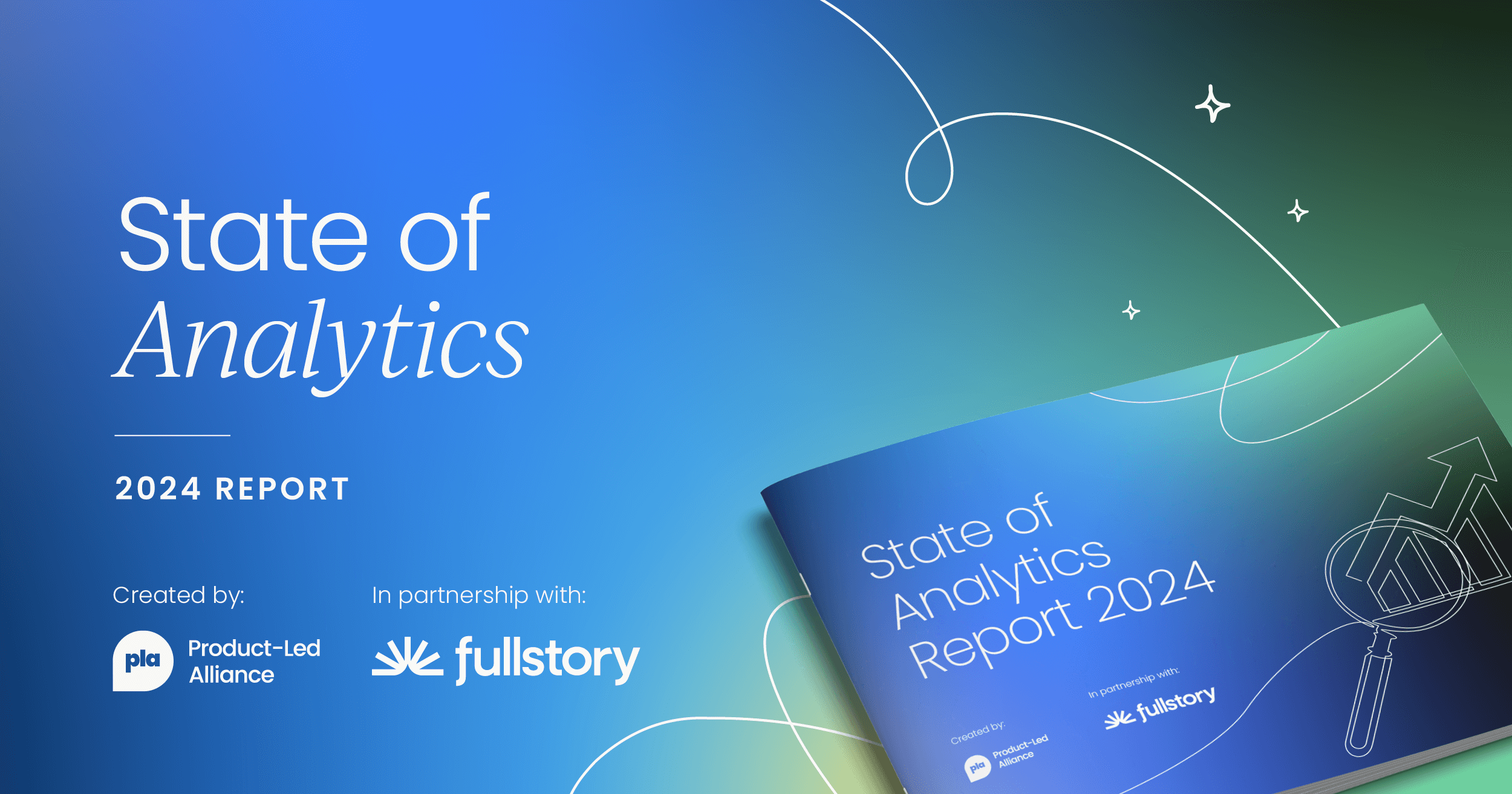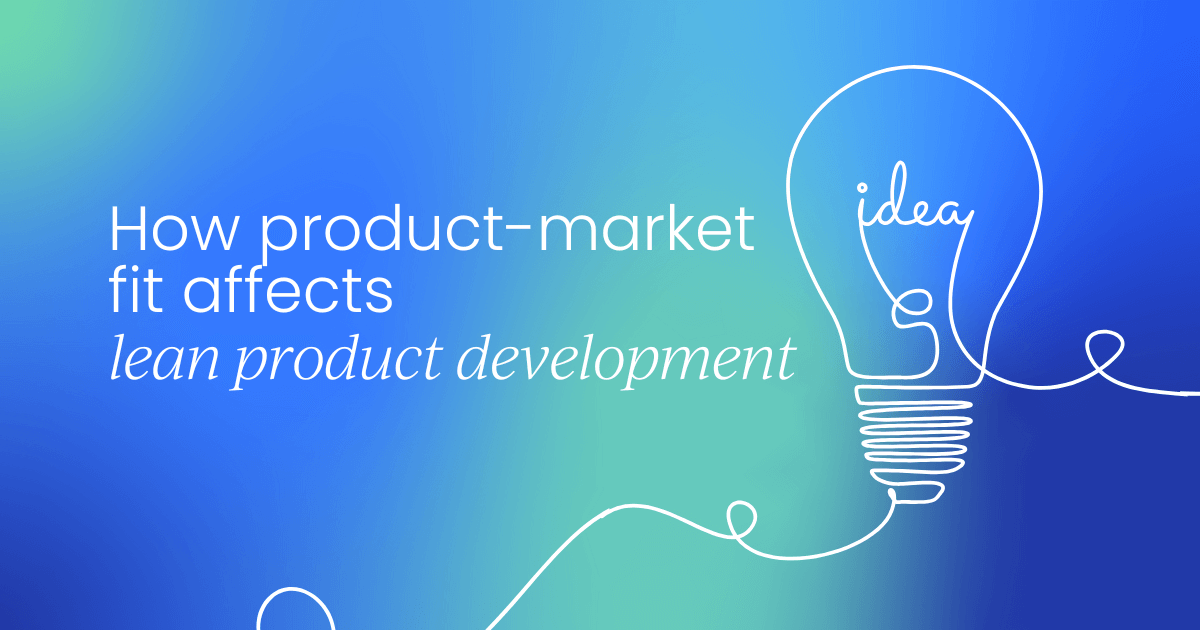What distinguishes products between success and failure? This is a basic question every product manager asks themselves. What they might not realize is that it's very simple to answer. It's a product-market fit. By merging it with lean product development, you'll be well on your way to a product that's going to smash the market and set your business to new heights.
What is lean product development?
Lean product development builds minimum viable products (MVPs) to test the assumptions that your product will solve a problem. By using data and customer feedback, combined with experimentation, lean product development validates ideas through structured testing.
What is product-market fit?
Product-market fit (PMF) is when a product is designed to meet the needs or solve a problem for a particular market or niche. Good PMF should incorporate desirability, feasibility, and viability.
- Desirability: Picking a good-sized market that needs a problem solved
- Feasibility: Design a product that you can make with your resources
- Viability: Sell a product that will be profitable
Combining the two means products will be built with both innovation and the customer in mind, while hopefully avoiding costly mistakes later.
How to ensure good product-market fit
What can you do to guarantee a good product-market fit? The process behind this is very simple. It's a combination of four methods:
- Design thinking
- Lean UX
- Agile processes
- Growth hacking
What is design thinking?
Design thinking focuses on the user's needs, using a human-centric approach to create solutions for them. You need to step back from the problem and ask the right questions. With design thinking, your primary focus is innovation through creative solutions. It's here that you merge desirability, feasibility, and viability.
Lean UX
Lean UX and lean product development both use, not surprisingly, the lean methodology, which focuses on fast iteration, user-centric design, and building efficient products. Lean UX wants to create a meaningful experience for its users, so quick prototyping and ongoing testing are necessary.
These two lean methods are highly collaborative, relying on cross-functional collaboration and encouraging teams to share insights. Both use hypotheses to prioritize features and minimize waste so products are highly usable and technically feasible.
Agile
Agile's flexibility merges well with lean product development's efficiency-focused methods, creating a streamlined process that is responsive to quick change. Because Agile works in sprints, lean development can focus on refining processes and improving quality throughout the product cycle.
Agile’s fast delivery cycles work well with Lean’s waste-reduction philosophy. Both teams can avoid scope creep and unneeded complexity by avoiding unnecessary work.
Growth hacking
Growth hacking focuses on fast experimentation to acquire and retain users. This is done by testing various channels, features, and strategies to identify what drives growth, especially for your product. When combined with lean product development, which emphasizes rapid cycles to test features and gather customer feedback, you can identify what works for user acquisition and retention. Think of quick wins and low-cost methods to drive just that.
The people who make lean product development possible
When it comes to development, you have the product owner, the scrum master, and the development team behind them.
Product owner/manager
A product owner (PO) or product maanger (PM) is a professional responsible for guiding the development, strategy, and success of a product. Their role combines strategic, operational, and customer-facing responsibilities to ensure the product meets market needs, aligns with business goals, and is delivered effectively. Although the titles "product manager" and "product owner" are often used interchangeably, they can have distinct roles depending on the organization and its methodologies.
UX designer
A UX (User Experience) Designer is a professional who focuses on creating meaningful, intuitive, and enjoyable interactions between users and products. The UX designer’s primary goal is to ensure that a product meets the needs, expectations, and preferences of its users, leading to a positive and effective experience.
Scrum Master
A Scrum Master is a key role in Agile Scrum teams, responsible for ensuring that the team follows the principles and practices of the Scrum framework. They act as a facilitator, coach, and guide for the team, helping remove obstacles and ensuring smooth, productive work cycles. The Scrum Master’s primary focus is to support the team, enabling them to deliver value incrementally and efficiently.
Development team
A Development Team in product development, particularly within Agile and Scrum frameworks, is a group of cross-functional professionals responsible for building, testing, and delivering the product. The team collaborates closely with the product owner and scrum master (if using Scrum) and is central to turning the product vision and requirements into a functional, high-quality product that meets user needs.
Communication in lean product development
Effective communication is essential to ensure alignment, reduce waste, and foster team collaboration. Lean emphasizes eliminating unnecessary steps and focusing on high-value activities, which requires clear, streamlined communication to keep everyone focused on shared goals and customer needs.
Teams in Lean environments prioritize open, frequent, and direct communication, enabling rapid problem-solving and agile responses to any changes. Daily stand-ups, progress updates, and retrospectives are used to maintain transparency and keep cross-functional teams aligned on tasks and priorities.
By promoting a culture of continuous improvement and feedback, Lean ensures that communication remains efficient and value-driven, helping teams stay adaptable, reduce delays, and bring customer-centered solutions to market faster.
Conclusion
Don't make concessions for years. Get on PMV and lean development now. Start using both with feedback and use new ways of work. Try out new tools and functionalities, and improve yourself to get better and faster so that you don't have to do so much manually.
Wondering how top product managers are making informed decisions that shape the success of their products in 2024? The State of Product Analytics report is here to answer that and more.
We’ve surveyed product professionals from around the world to get a real-world snapshot of how data is driving product decisions today. From must-have metrics to game-changing tools, this report dives into the essentials of product analytics and how it’s evolving.




 Follow us on LinkedIn
Follow us on LinkedIn




